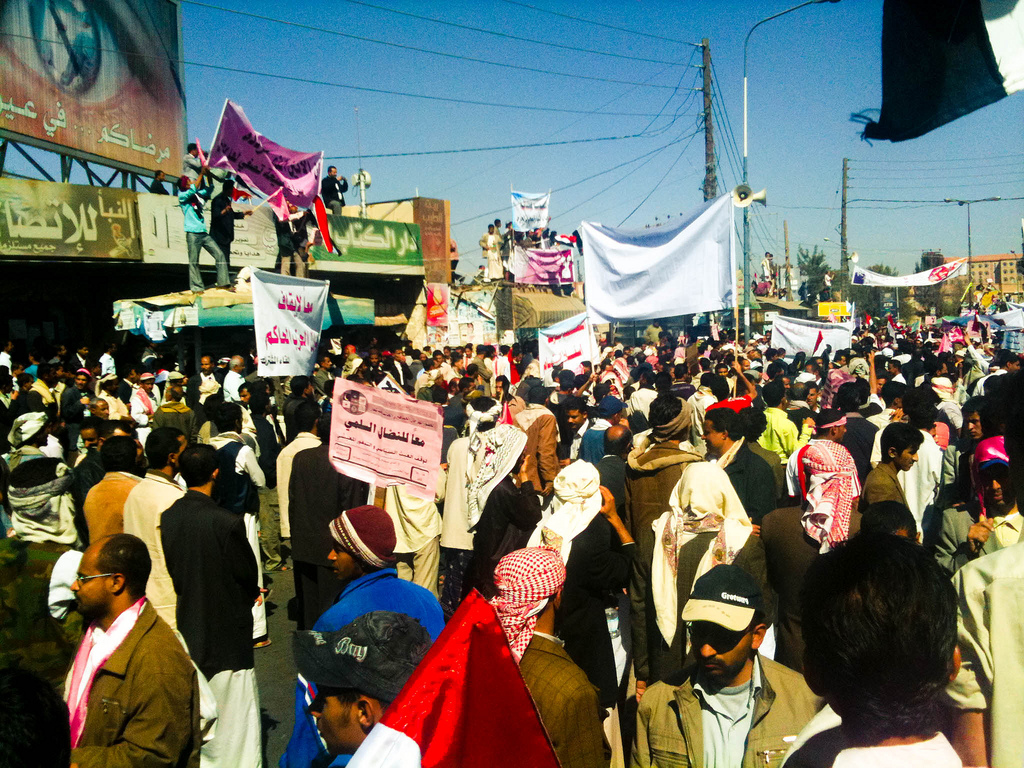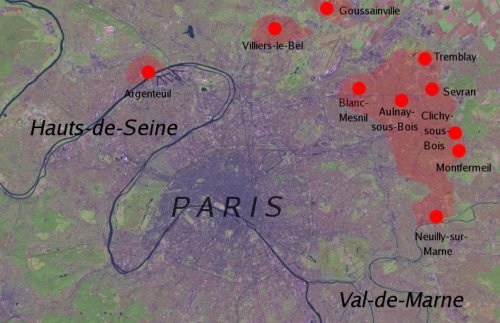|
Palestinian Uprising
An intifada ( ar, انتفاضة ') is a rebellion or uprising, or a resistance movement. It is a key concept in contemporary Arabic usage referring to a legitimate uprising against oppression.Ute Meinel ''Die Intifada im Ölscheichtum Bahrain: Hintergründe des Aufbegehrens von 1994-1998,''LIT Verlag Münster, 2003 p.10: 'Der Begriff der Intifada, der die Vorstellung eines legitimen Ausbebegehrens gegen Unterdrückung enthält, ist gegenwärtig ein Schlüsselbegriff in der arabischen Welt, von dem eine grosse emotionale Anziehungskraft ausgeht.' Etymology ''Intifada'' is an Arabic word literally meaning, as a noun, "tremor", "shivering", "shuddering".Mary K.Roberson, 'Birth, Transformation, and Death of Refugee Identity: Women and Girls of the Intifada,' in Ellen Cole,Esther D Rothblum,Oliva M Espin (eds.''Refugee Women and Their Mental Health: Shattered Societies, Shattered Lives,''Routledge, 2013 p.42. It is derived from an Arabic term ''nafada'' meaning "to shake", "sha ... [...More Info...] [...Related Items...] OR: [Wikipedia] [Google] [Baidu] |
Rebellion
Rebellion, uprising, or insurrection is a refusal of obedience or order. It refers to the open resistance against the orders of an established authority. A rebellion originates from a sentiment of indignation and disapproval of a situation and then manifests itself by the refusal to submit or to obey the authority responsible for this situation. Rebellion can be individual or collective, peaceful ( civil disobedience, civil resistance, and nonviolent resistance) or violent (terrorism, sabotage and guerrilla warfare). In political terms, rebellion and revolt are often distinguished by their different aims. While rebellion generally seeks to evade and/or gain concessions from an oppressive power, a revolt seeks to overthrow and destroy that power, as well as its accompanying laws. The goal of rebellion is resistance while a revolt seeks a revolution. As power shifts relative to the external adversary, or power shifts within a mixed coalition, or positions harden or soften on ei ... [...More Info...] [...Related Items...] OR: [Wikipedia] [Google] [Baidu] |
Lebanese Civil War
The Lebanese Civil War ( ar, الحرب الأهلية اللبنانية, translit=Al-Ḥarb al-Ahliyyah al-Libnāniyyah) was a multifaceted armed conflict that took place from 1975 to 1990. It resulted in an estimated 120,000 fatalities and an exodus of almost one million people from Lebanon. The diversity of the Lebanese population played a notable role in the lead-up to and during the conflict: Sunni Muslims and Christians comprised the majority in the coastal cities; Shia Muslims were primarily based in the south and the Beqaa Valley in the east; and Druze and Christians populated the country's mountainous areas. The Lebanese government had been run under the significant influence of elites within the Maronite Christian community. The link between politics and religion had been reinforced under the French Mandate from 1920 to 1943, and the country's parliamentary structure favoured a leading position for its Christian-majority population. However, the country had a ... [...More Info...] [...Related Items...] OR: [Wikipedia] [Google] [Baidu] |
2011–2013 Sudanese Protests
The 2011–2013 protests in Sudan began in January 2011 as part of the Arab Spring regional protest movement. Unlike in other Arab countries, popular uprisings in Sudan had succeeded in toppling the government prior to the Arab Spring in 1964 and 1985. Demonstrations in Sudan however were less common throughout the summer of 2011, during which South Sudan seceded from Sudan, but resumed in force later that year and again in June 2012, shortly after the government passed its much criticized austerity plan. Background President Omar al-Bashir had been the List of heads of state of Sudan, Sudanese president since he led a bloodless coup in 1989. Bashir began instituting Sharia and abolished political parties in 1990. He appointed himself president in 1993 and won a 1996 Sudanese general election, presidential election in 1996 as the only candidate. In 2008, the International Criminal Court called for his arrest for alleged genocide, crimes against humanity and war crimes in Darfur. ... [...More Info...] [...Related Items...] OR: [Wikipedia] [Google] [Baidu] |
Egyptian Revolution Of 2011
The 2011 Egyptian revolution, also known as the 25 January revolution ( ar, ثورة ٢٥ يناير; ), began on 25 January 2011 and spread across Egypt. The date was set by various youth groups to coincide with the annual Egyptian "Police holiday" as a statement against increasing police brutality during the last few years of Hosni Mubarak's presidency. It consisted of demonstrations, marches, occupations of plazas, non-violent civil resistance, acts of civil disobedience and strike action, strikes. Millions of protesters from a range of socio-economic and religious backgrounds demanded the overthrow of Egyptian President Hosni Mubarak. Violent clashes between security forces and protesters resulted in at least 846 people killed and over 6,000 injured. Protesters retaliated by burning over 90 police stations across the country. The Egyptian protesters' grievances focused on legal and political issues, including police brutality, state-of-emergency laws, lack of political free ... [...More Info...] [...Related Items...] OR: [Wikipedia] [Google] [Baidu] |
2011 Yemeni Revolution
The Yemeni Revolution (intifada), also known as the Yemeni Revolution of Dignity followed the initial stages of the Tunisian Revolution and occurred simultaneously with the Egyptian Revolution of 2011 and other Arab Spring protests in the Middle East and North Africa. In its early phase, protests in Yemen were initially against unemployment, economic conditions and corruption, as well as against the government's proposals to modify Yemen's constitution. The protesters' demands then escalated to calls for the resignation of Yemeni President Ali Abdullah Saleh. Mass defections from the military, as well as from Saleh's government, effectively rendered much of the country outside of the government's control, and protesters vowed to defy its authority. A major demonstration of over 16,000 protesters took place in Sanaʽa, Yemen's capital, on 27 January. On 2 February, Saleh announced he would not run for reelection in 2013 and that he would not pass power to his son. On 3 Fe ... [...More Info...] [...Related Items...] OR: [Wikipedia] [Google] [Baidu] |
Tunisian Revolution
The Tunisian Revolution, also called the Jasmine Revolution, was an intensive 28-day campaign of civil resistance. It included a series of street demonstrations which took place in Tunisia, and led to the ousting of longtime president Zine El Abidine Ben Ali in January 2011. It eventually led to a thorough democratisation of the country and to free and democratic elections. The demonstrations were caused by high unemployment, food inflation, corruption, a lack of political freedoms (such as freedom of speech) and poor living conditions. The protests constituted the most dramatic wave of social and political unrest in Tunisia in three decades and resulted in scores of deaths and injuries, most of which were the result of action by police and security forces. The protests were sparked by the self-immolation of Mohamed Bouazizi on 17 December 2010. They led to the ousting of Ben Ali on 14 January 2011, when he officially resigned after fleeing to Saudi Arabia, ending his ... [...More Info...] [...Related Items...] OR: [Wikipedia] [Google] [Baidu] |
Arab Spring
The Arab Spring ( ar, الربيع العربي) was a series of Nonviolent resistance, anti-government protests, Rebellion, uprisings and Insurgency, armed rebellions that spread across much of the Arab world in the early 2010s. It began in Tunisian Revolution, Tunisia in response to corruption and economic stagnation. From Tunisia, the protests then spread to five other countries: Libya, Egypt, Yemen, Syria and Bahrain. Rulers were deposed (Zine El Abidine Ben Ali, Muammar Gaddafi, Hosni Mubarak, Ali Abdullah Saleh) or major uprisings and social violence occurred including riots, civil wars, or insurgencies. Sustained street demonstrations took place in Morocco, Iraq, Algeria, Lebanon, Jordan, Kuwait, Oman and Sudan. Minor protests took place in Djibouti, Mauritania, State of Palestine, Palestine, Saudi Arabia and the Southern Provinces, Moroccan-occupied Western Sahara. A major slogan of the demonstrators in the Arab world is ''Ash-shab yurid isqat an-nizam, ash-shaʻb yurīd ... [...More Info...] [...Related Items...] OR: [Wikipedia] [Google] [Baidu] |
2005 French Riots
The 2005 French riots (french: Émeutes de 2005 dans les Banlieues Françaises), was a three-week period of riots in the suburbs of Paris and other French cities, in October and November 2005. These riots involved youth in violent attacks, and the burning of cars and public buildings. The unrest started on 27 October at Clichy-sous-Bois, where police were investigating a reported break-in at a building site, and a group of local youths scattered in order to avoid interrogation. Three of them hid in an electrical substation where two died from electrocution, resulting in a power blackout. (It was not established whether police had suspected these individuals or a different group, wanted on separate charges.) The incident ignited rising tensions about youth unemployment and police harassment in the poorer housing estates, and there followed three weeks of rioting throughout France. A state of emergency was declared on 8 November, later extended for three weeks. The riots resulted ... [...More Info...] [...Related Items...] OR: [Wikipedia] [Google] [Baidu] |
1991 Iraqi Uprisings
The 1991 Iraqi uprisings were ethnic and religious uprisings in Iraq led by Shi'ites and Kurds against Saddam Hussein. The uprisings lasted from March to April 1991 after a ceasefire following the end of the Gulf War. The mostly uncoordinated insurgency was fueled by the perception that Iraqi President Saddam Hussein had become vulnerable to regime change. This perception of weakness was largely the result of the outcome of the Iran–Iraq War and the Gulf War, both of which occurred within a single decade and devastated the population and economy of Iraq. Within the first two weeks, most of Iraq's cities and provinces fell to rebel forces. Participants of the uprising were a diverse mix of ethnic, religious and political affiliations, including military mutineers, Shia Arab Islamists, Kurdish nationalists, and far-left groups. Following initial victories, the revolution was held back from continued success by internal divisions as well as a lack of anticipated American a ... [...More Info...] [...Related Items...] OR: [Wikipedia] [Google] [Baidu] |
1990s Uprising In Bahrain
The 1990s uprising in Bahrain ( ar, الانتفاضة التسعينية في البحرين) also known as the uprising of dignity ( ar, انتفاضة الكرامة) was an uprising in Bahrain between 1994 and 1999 in which leftists, liberals and Islamists joined forces to demand democratic reforms. The uprising caused approximately forty deaths and ended after Hamad bin Isa Al Khalifa became the Emir of Bahrain in 1999 and a referendum on 14–15 February 2001 massively supported the National Action Charter. The uprising resulted in the deaths of around 40 civilians and at least one Bahraini soldier. Bahrain News Agency. 23 April 2011. Retrieved on 23 June 2012 < ... [...More Info...] [...Related Items...] OR: [Wikipedia] [Google] [Baidu] |
Israeli–Palestinian Conflict (2015)
The Israeli–Palestinian conflict is one of the world's most enduring conflicts, beginning in the mid-20th century. Various attempts have been made to resolve the conflict as part of the Israeli–Palestinian peace process, alongside other efforts to resolve the broader Arab–Israeli conflict. Public declarations of claims to a Jewish homeland in Palestine, including the First Zionist Congress of 1897 and the Balfour Declaration of 1917, created early tensions in the region. Following World War I, the Mandate for Palestine included a binding obligation for the "establishment in Palestine of a national home for the Jewish people". Tensions grew into open sectarian conflict between Jews and Arabs. The 1947 United Nations Partition Plan for Palestine was never implemented and provoked the 1947–1949 Palestine War. The current Israeli-Palestinian status quo began following Israeli military occupation of the Palestinian territories in the 1967 Six-Day War. Progress was made towar ... [...More Info...] [...Related Items...] OR: [Wikipedia] [Google] [Baidu] |




.jpg)



